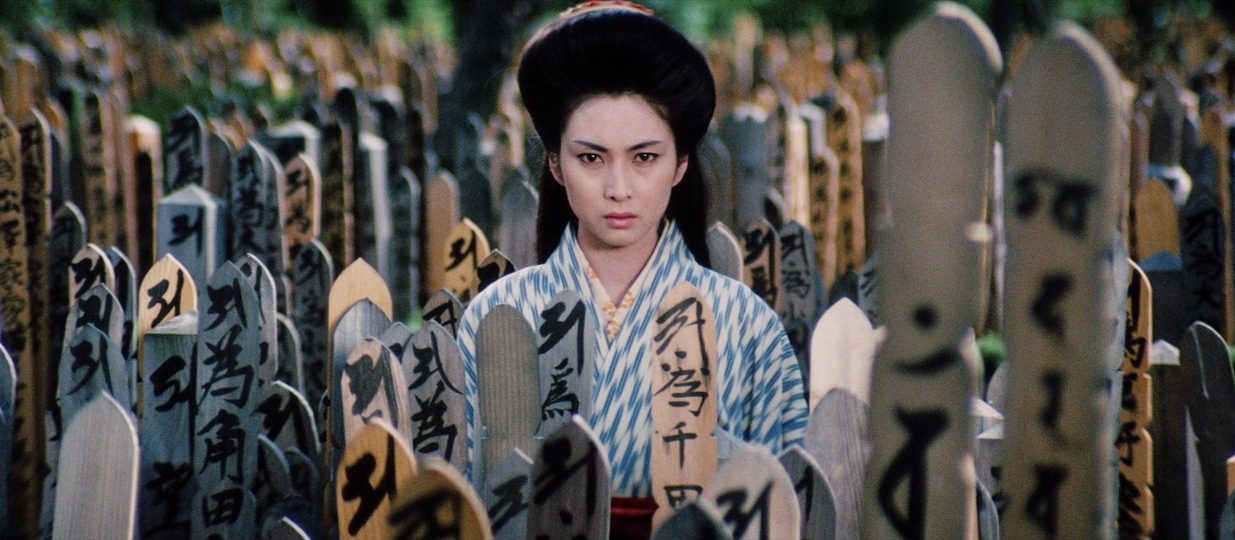
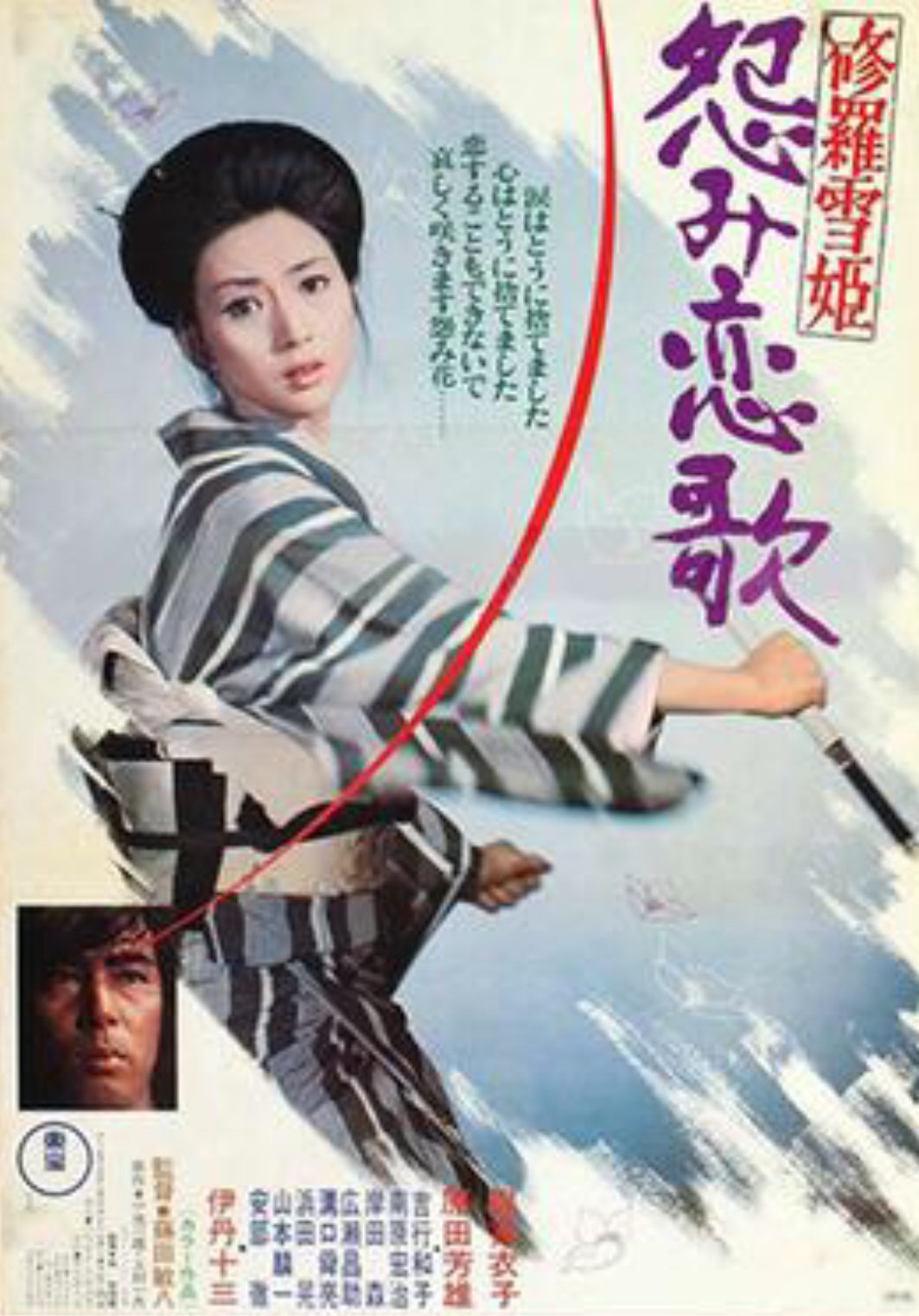
“On a night when four feet of snow fell on Tokyo, Yuki came into the world, a child of destiny, bearer of a vendetta.”
Toshiya Fujita’s Lady Snowblood is a stunning film. Sketching out a rape-revenge storyline, it frequently rewards its protagonist’s bloodlust with eye-popping displays of stylistic violence delivered by the poker-faced assassin. But hidden behind its awesome geysers of blood and severed limbs are the keen sensibilities of a visionary artist, however transient his inspiration. Painterly compositions, bold color schemes, manga panels, stop motion photography, posters, and woodcuts are employed to create an invigorating visual aesthetic, which is then whipped into a frenzy by breathtaking camerawork and spirited editing of both sound and image.
All of these stylistic choices allow the film to deftly modulate between its disparate touchpoints: the horror of its quicksilver flashbacks, the gut wrenching sadness of Yuki’s conception, the contemptuous political commentary of its cultural frame, the preposterous pulp of its grisly savagery. There’s an elasticity to the picture, a certain sense of freehand experimentation that emerges organically from the telling of the story and is entirely absorbing.
Regrettably, those markers of visual diversity and narrative delirium are muted in the sequel, Love Song of Vengeance, a decidedly inferior follow-up that moves on from the narrow-scoped rampage of the original in favor of a less satisfactory story in which the main character is only a small factor. While it retains its director’s creative compositional eye and its star’s impassive gaze, it falls short of the first film in terms of story, character, choreography, and euphoric experimentation with the medium.
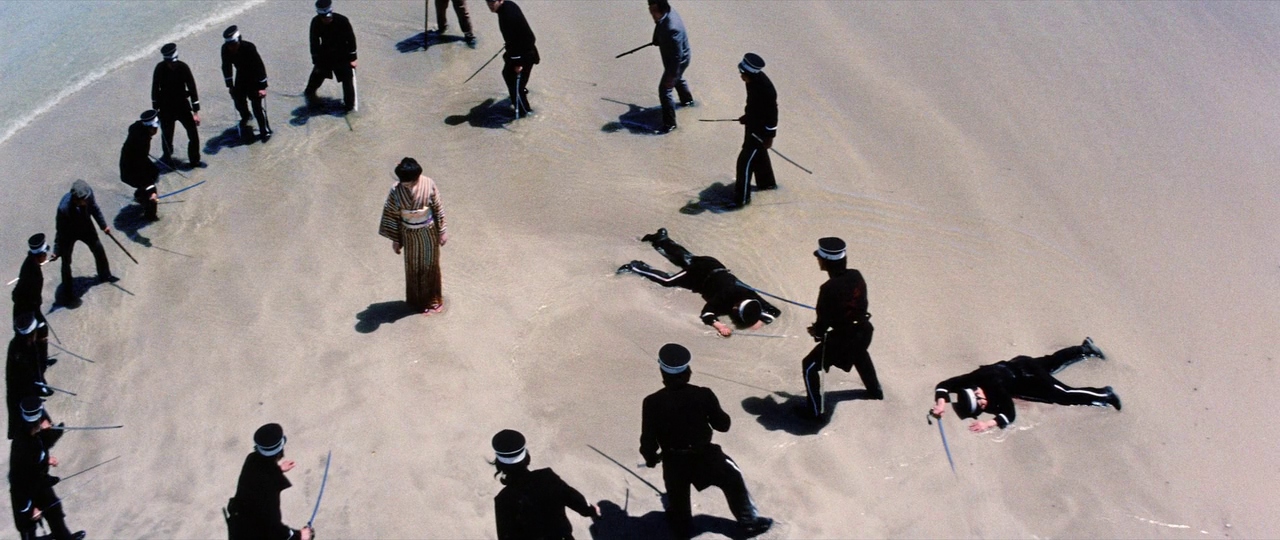
Despite releasing only a year after the first film, the sequel is set more than a decade later. It begins with Yuki (Meiko Kaji) visiting her mother’s grave in search of solace, as she has been on the run from both her enemies and the authorities since settling the vendetta bequeathed to her at birth. The bravura opening set piece teases the bright red gore that marked the first film as Lady Snowblood stoically dispatches a gang of bandits in a long unbroken tracking shot that leaves her last assailant squirting blood across the glassy surface of a water garden. It is excessive and absurd, just like the original, and immediately reestablishes Yuki’s effortless lethality, even if its choreography feels lackluster. However, by the end of the credits, the world-weariness hinted at by the anti-heroine’s visit to the gravesite becomes apparent: surrounded by police, she elects to toss her katana away and yield rather than continue with the bloodletting. This submissive act, unthinkable before, actually makes sense for the character. Born in prison to a mother hell-bent on creating a demon to avenge her rape and her husband’s murder, Yuki has fulfilled her life’s purpose and now exists in an aimless fugue. What else does she have to live for?
Brought to trial and sentenced to hang by the neck for her previous crimes, Yuki is rescued while en route to the gallows by Kikui Seishiro (Shin Kishida), the ringleader of the shadowy secret police; a politically-motivated faction with aims that require Yuki’s unique talents. And so Yuki finds herself acting as a spy in exchange for immunity, posing as a maid to infiltrate the home of Tokunaga Ransui (Jûzô Itami), a radical anarchist whose ideas threaten to topple the current regime (the film takes place in the Meiji era, shortly after the Russo-Japanese War). She is tasked with obtaining an important document that the secret police desperately want before killing Ransui; but when her target confronts her about her past and details the atrocities committed by the government in order to silence his colleagues, she begins to sympathize with the anarchist’s ideology and recognize the government’s corruption. Right before our eyes, then, Yuki morphs from an assassin haunted by a personal vendetta that no longer drives her, into a guerilla warrior fighting against a crooked political system of her own volition.
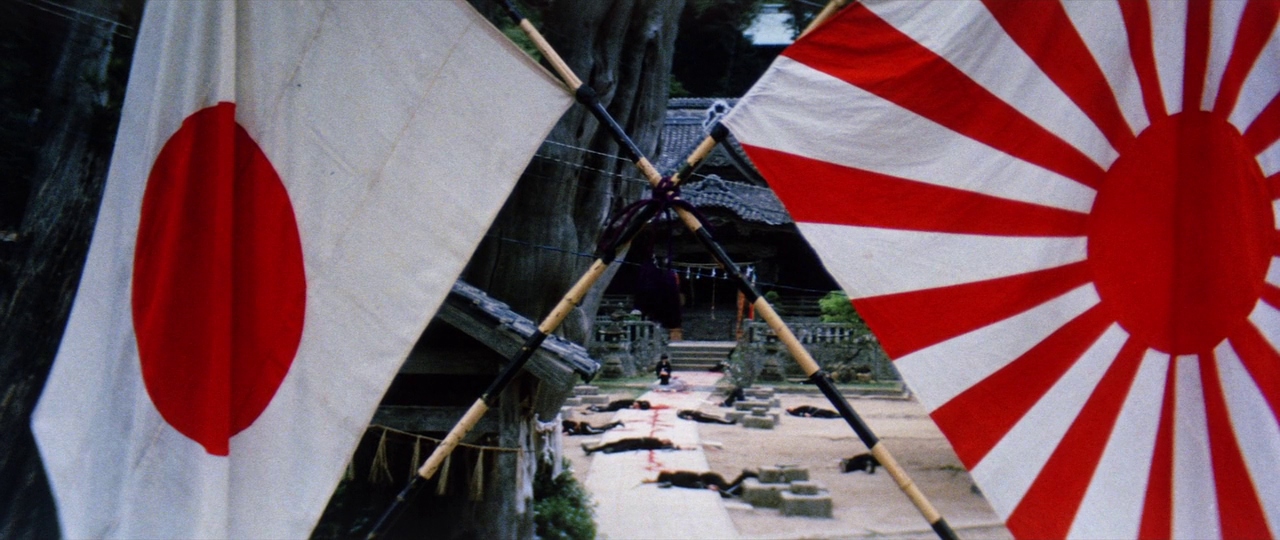
While one might expect Lady Snowblood to get caught up in the revolution or perhaps discover that the radicals are just as corrupt as the government they rail against—anything to find a personal stake in the conflict—instead she finds herself relegated to the sidelines. Occasionally, she’s called on to savagely hack up some goons, but for large swaths of the narrative she’s simply a spectator drifting through a convoluted plot that trips itself up by wallowing in self-serious ideological grandstanding. Even when her allegiance shifts it doesn’t feel like a moment of transformative clarity so much as a forced story beat to bring fresh bodies within the range of Yuki’s sword. Ditto when she gets pulled into the orbit of the anarchist’s brother (Yoshio Harada), a disgraced doctor who bears witness to government-sanctioned biological warfare. Ironically enough, as the political machinations take precedence over furthering the story of Yuki’s character, her newfound personal agency is stripped from her on self-contradictory ideological grounds. In effect then, the vindictive agent of the first film fails to become the people’s hero that the sequel wants her to be.
Story woes aside, Love Song of Vengeance still provides sufficient gore-laden pulp to satisfy fans of the original’s grindhouse sensibilities. It isn’t until late in the film that things really ramp up with some severed arms (before this it’s mostly squibs and flails), but there’s an understated commitment to a more general brand of ghastliness with a protracted depiction of torture, a gouged eye, and pestilential symptoms of the bubonic plague. It doesn’t outdo the original’s stylistic gore, but rather extends it into less alluring territory.
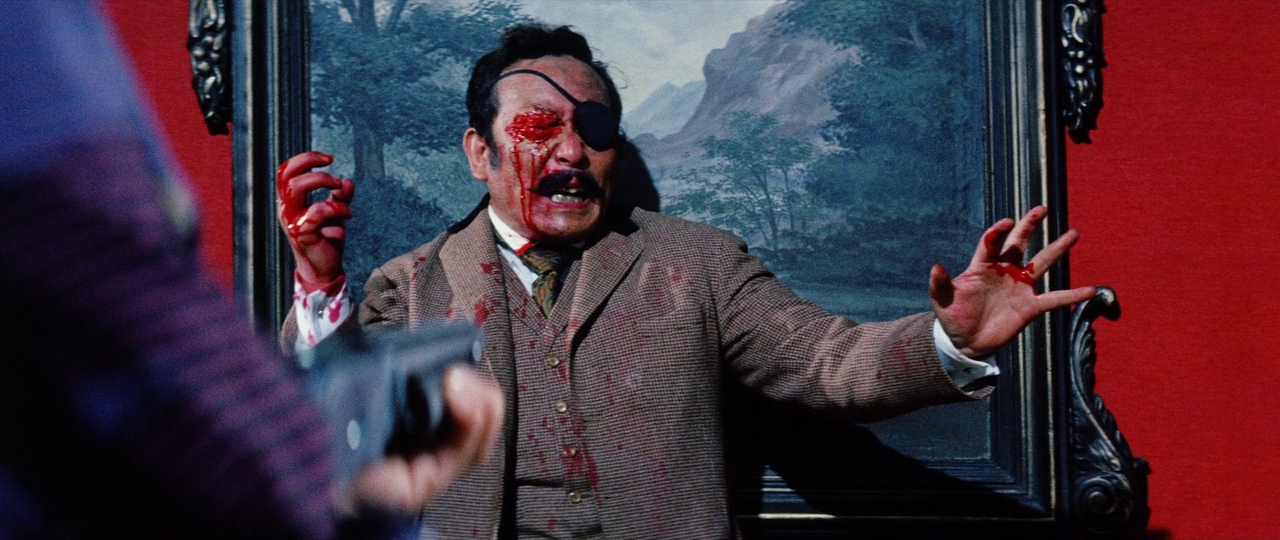
Technically, the film is both more and less accomplished than its predecessor. While Fujita has somewhat calmed down behind the camera, which dulls some of the unpredictable excitement of the original, there are numerous quirky maneuvers that keep the film visually interesting. These include a number of single take fight sequences, some erratic zooming, a neat shot where the camera twists on its z-axis as it tracks its subjects from overhead, and a slick transition from a historical sketch of a slum to the genuine article. Moreover, in addition to his light experimentation, Fujita simply knows how to frame an arresting shot, whether that be capturing a ship silhouetted against the sunrise or creatively employing deep focus. And the colors are once again eye-popping. However, even though there is less of it, the choreography is a step down from the original in terms of heft. Too often it feels like Kaji only rehearsed a sequence once or twice and handles her sword like it is unfamiliar to her.
Rather unfortunately, by moving on from the focused fever dream of the first film’s telescopic narrative, and placing the same character into such a radically different set of circumstances, Love Song of Vengeance fails to recapture the single-minded brilliance of the original Lady Snowblood.